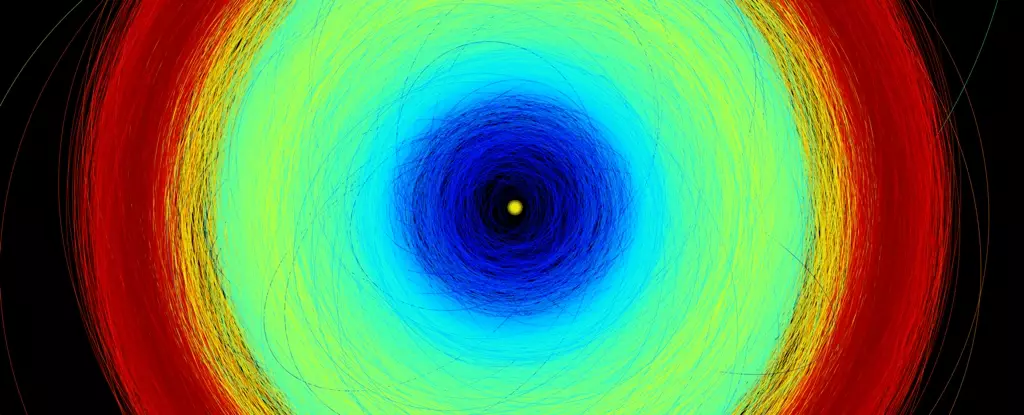The Gaia mission, known for its remarkable efforts in mapping stars in the Milky Way Galaxy, has also proven to be a successful asteroid hunter. Recent reports from astronomers highlight Gaia’s achievement in identifying more moons of asteroids within our solar system. With the upcoming confirmation of data from Gaia’s release 3, these observations are expected to contribute an additional 352 binary asteroids to the existing count. This significant increase nearly doubles the known number of asteroids with moons, showcasing the spacecraft’s prowess in uncovering these celestial phenomena.
The discoveries made by Gaia reveal a vast collection of asteroids, with around 350 asteroids exhibiting potential moons, thus categorizing them as binary systems. These findings, coupled with the previous identifications of binary asteroids, reinforce the understanding that the population of asteroids is more intricate and diverse than previously believed. The challenges in detecting binary asteroids, primarily due to their small size and distance from Earth, underscore the significance of Gaia’s contributions in expanding our knowledge of the solar system.
Traditionally considered a less thrilling aspect of astronomy, astrometry involves the precise measurement of the positions of celestial objects in space. While not as glamorous as the discovery of comets or galaxies, astrometry plays a crucial role in locating planets orbiting distant stars. Gaia’s exceptional astrometric capabilities have enabled astronomers to detect subtle shifts in the positions of asteroids, indicating the presence of companions influencing their trajectories. The spacecraft’s accurate measurements and spectroscopic data have paved the way for in-depth analysis of asteroid composition and behavior, promising further revelations in the upcoming data releases.
Within the dynamic framework of the Solar System, asteroids and comets serve as remnants of planetary formation processes, offering valuable insights into the early conditions of the nebula where celestial bodies originated. Binary asteroids, as revealed by Gaia’s observations, represent a significant component of the system’s rocky and icy materials, shedding light on the interactions and evolution of small celestial bodies. By categorizing asteroids into distinct families based on their orbits and properties, astronomers can unravel the intricate dynamics of these objects and their role in shaping the solar environment.
The discovery of binary asteroids challenges the notion of asteroids existing solely as solitary objects, highlighting the potential for collisions, re-coalescence, and gravitational interactions in shaping their orbits. Gaia’s meticulous astrometric measurements offer a unique perspective on the formation and behavior of binary asteroids, prompting further studies to elucidate their origins and evolutionary paths. The scientific community anticipates new findings from ongoing observations and collaborative research efforts, aiming to decipher the complexities of binary asteroid formation theories.
Far from being mundane bookkeeping tasks, the advancements in astrometry facilitated by the Gaia mission have revolutionized our understanding of asteroids, their moons, and the intricate dynamics of the Solar System. As astronomers continue to delve into the mysteries of binary asteroids and their significance in cosmic evolution, Gaia’s groundbreaking discoveries pave the way for unprecedented insights into the complex realm of celestial bodies.


Leave a Reply